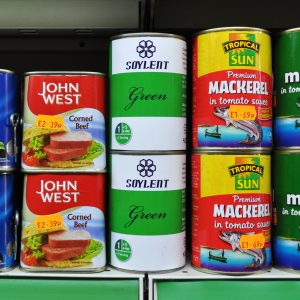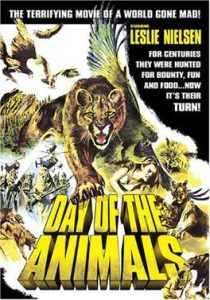3 Cli-Fi Films
Narrative/Feature Films that, on some level, depict the effects of climate change on the Earth and its inhabitants – or “Cli-Fi Films,” for Climate Fiction, a play on Science Fiction – have their roots in classic movies set against backdrops of environmental catastrophes and natural disasters. For example, the film Grapes of Wrath (1940), an adaptation of John Steinbeck’s novel, depicts the escape to California of the fictional Joad family from the actual Depression-era Dust Bowl of Oklahoma. Severe drought combined with poor farming and tilling practices on the Great Plains of the Midwest led to dust storms that blotted out the sun. The natural disaster in the midst of an economic disaster of the Depression made “climate refugees” of millions like the Joads. Krakatoa, East of Java (1968) is loosely based on events surrounding the 1883 eruption of the volcano on the East Indies island of Krakatoa. Advances in special effects allowed for a then-eye-popping recreation of the eruption, garnering the film a nomination for the Academy Award for Best Special Visual Effects.

The first wave of films to directly address climate change, if only sparingly or obliquely, began with the cult classic Soylent Green (1973), starring Charlton Heston. Set in a dystopian New York City in 2022 (the year I began writing this!), “the greenhouse effect” and “a heat wave all year round” have led to pollution, dying oceans, overpopulation, widespread euthanasia, and depleted resources. Only the small number of elite can afford apartments, clean water, and natural food, while the majority of the population live in dire poverty, forced to haul communal water and eat highly processed wafers: “Soylent Red,” “Soylent Yellow,” and the latest product, the far more flavorful and nutritious “Soylent Green.” Much of the plot revolves around a murder investigation, but the final moment and line of the film – with that inimitable, overly-dramatic delivery perfected by Heston – reveals the horrifying truth about the makeup of Soylent Green. (I’ll leave it to you to watch the movie and discover that for yourself).

Four years later came Day of the Animals (1977), directed by William Girdler and starring Leslie Nielson (he of soon-to-be Airplane! fame). In it, the depletion of the ozone layer has caused animals living at higher altitudes to run amok, attacking humans, including a group of hikers who have to battle animals to survive. As the plot unwinds, the solar radiation causes psychosis and the hikers become more and more like the animals that hunt them. In spite of the serious themes, poor special effects and melodramatic dialogue now make much of the film almost laughable; at one climactic moment Nielson, standing shirtless with arms outstretched and gaze upward, shouts, “…pray – if there’s a god left up there to believe in! My Father who art in heaven: you made a jackass outta me for years!” The over-the-top tone (see quote just mentioned) and scenes (see a crazed Nielson try to bite a rampaging grizzly’s ear off!) made the film’s dire depiction of the effects of climate change difficult to take seriously. Still, its depiction of the effects of climate change was prescient.
Since both Soylent Green and Day of the Animals, feature filmmakers have produced over seventy movies that could arguably be called “Cli-Fi Films” to some degree. Although there seemed to be a spate of these during the 1980s, the next decade saw the ramping up of a focus on climate change in narrative film, beginning with the animated FernGully: The Last Rainforest (1992).
Here in the body of this resource, I will provide both descriptions and analyses of what I would consider significant entries, since 1992, in the Cli-Fi Film oeuvre. This resource is meant to be more representative than comprehensive, and you may have viewed, or know of, other films that could be included in this overview; feel free to contact me with any suggestions for films to add, improvement to content, etc. Instead of an overall chronological order, I will divide the films discussed into six categories:
- Humans/”Civilization” (bad) vs. Aliens/Nature/Indigenous Populations (good)
- Post-Climapocalyptic Dystopias
- Heroes/Deus Ex Machina
- Psychological Thrillers
- Comedies
- Conclusion: The Future of Cli-Fi Films
There certainly is no single correct way to organize these films, so feel free to design your own categories based on your own viewings and insights into the movies!
Let’s begin exploring the sometimes bleak, often horrifying, sometimes entertaining, often thought-provoking, even occasionally funny, and hopefully (eventually) planet-saving landscape of Cli-Fi Films…

